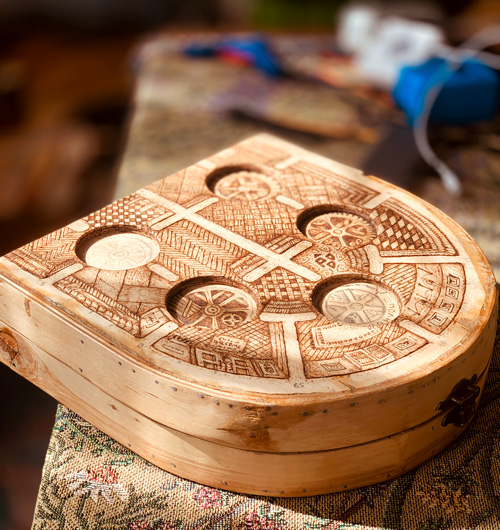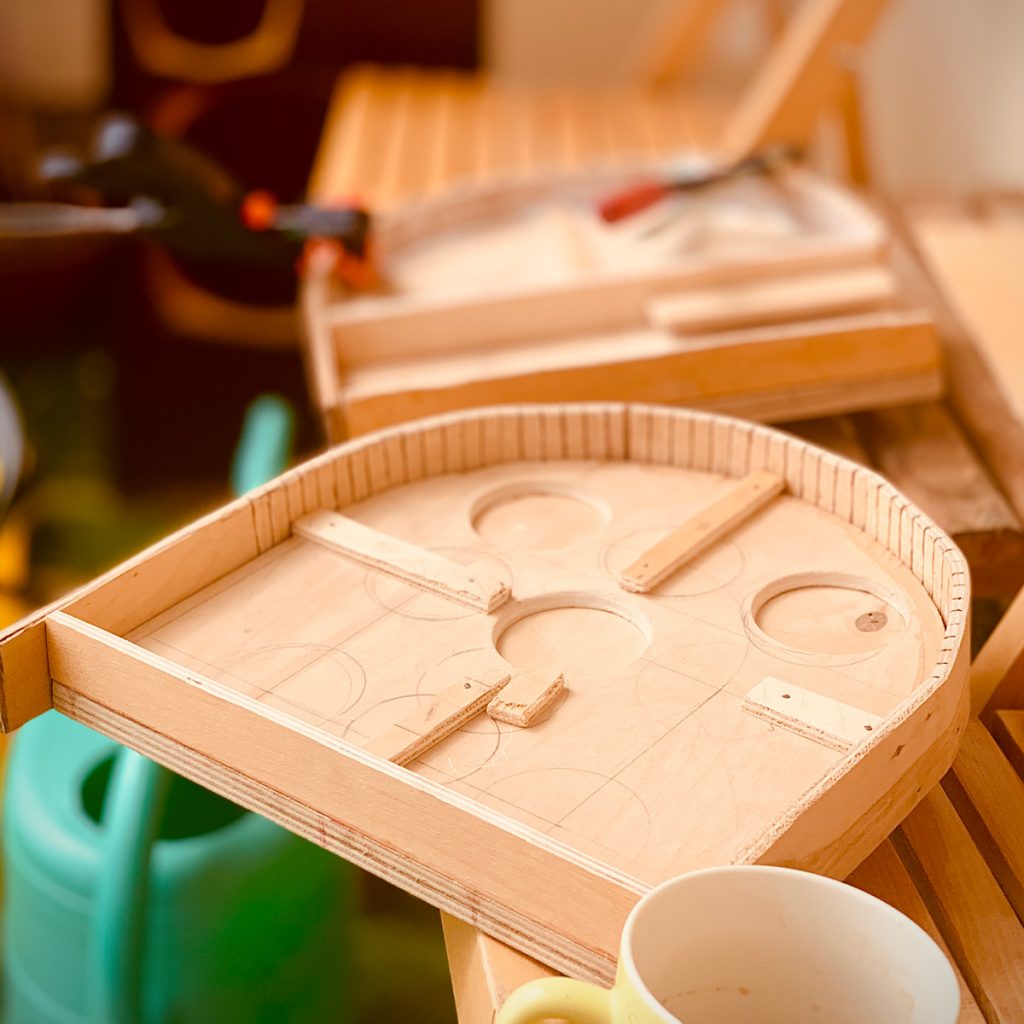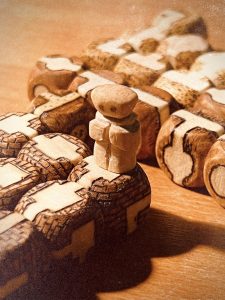Shelfshift – A Library Labyrinth started as a spontaneous experiment with leftover wood and old furniture legs, but it quickly turned into something much more intricate. As I pieced it together, I realized it wasn’t just about construction—it required deep thinking about both the production process and gameplay. What began as a simple idea soon became a creative challenge, pushing me to make it truly unique
 It began one ordinary day, showing my daughter how to use a compass for drawing. As arcs took shape on paper, a creative spark ignited: what if I designed a board game?
It began one ordinary day, showing my daughter how to use a compass for drawing. As arcs took shape on paper, a creative spark ignited: what if I designed a board game?
I envisioned a game housed in an unusual wooden box that adhered to standard bookshelf dimensions but had a vintage, aesthetically pleasing charm. Most importantly, the game would feature unique, chess-like figurines and innovative gameplay that broke away from conventional molds.
Shelfshift – a Library Labyrinth – From Idea to Concept
At the time, I had been experimenting with a circular drill. Merging that with my newfound inspiration, I came up with the concept: a labyrinth with rooms and revolving walls. The box would not only contain this intricate playing field but also conceal layers of surprises to enhance the gaming experience.Cutting and assembling the pieces brought its own challenges. The most difficult task was bending wooden planks to shape the box’s curved sides. While I knew it was theoretically possible, in practice, it took breaking two prototypes before achieving a design I was proud of.


From Labyrinth to Library
The labyrinth’s narrative evolved into an old library, scattered with 140 miniature handmade books. The story centered on four characters racing to escape by finding a hidden key. To locate it, players must collect book combinations and return them to the shelves, earning points. A bonus collection of herbs could even multiply scores.But the library held dangers too—venomous surprises among the shelves made every decision crucial. Gameplay adjustments, based on rounds of alpha testing, added strategic depth. Players gained the option to interact in new ways, choosing between collaborative or competitive strategies, and adjusting the difficulty levels for varied experiences.


The Quest for Perfection
The labyrinth’s narrative evolved into an old library, scattered with 140 miniature handmade books. The Next came the challenge of crafting the 140 miniature books. I chose wooden Scrabble tiles for their durability but soon realized it would be an arduous task. Each tile became part of an elaborate puzzle, contributing to the balance of strategy and chance in gameplay.Then came the inventory board, combined with a health wheel, crafted from orgalite to save space. Eventually, I may revisit this component, enhancing its functionality and design. As the box filled with features, I reached a critical decision—trim the excess ideas or create a bigger box. Many ideas were set aside for future expansions.


The Final Stretch
Decorating the interior with velvet tissue was a finishing touch to transform the crude box into an elegant container for the game. From concept to completion, the journey took about nine months. Most of that time was spent experimenting with materials and refining mechanics.Looking ahead, my goal is to create a second version, using advanced tools like laser cutters and engravers to ensure precision. Even then, some elements will remain handcrafted—maintaining the personal touch that defines this project. This time, I’ll work with real wood, pushing the boundaries of what’s possible.
For now, my handmade game stands as a testament to creativity, persistence, and the joy of carving one’s own version of chess.



Support the project’s growth
Are you excited about this project and want to support its growth? You can contribute by making a donation via PayPal.Simply scan the QR code to show your support. Every contribution helps bring this project to life.
Thank you for your generosity!



